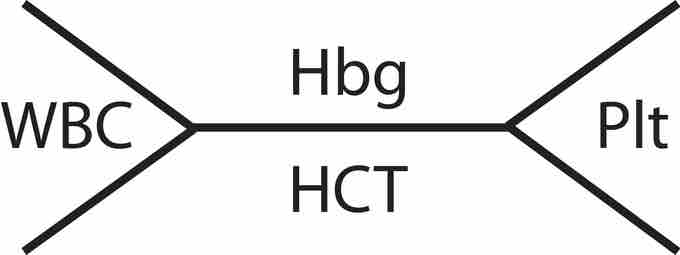Primary immunodeficiencies are disorders in which a part of the body's immune system is missing or does not function properly. To be considered a primary immunodeficiency, the cause of the immune deficiency must not be secondary in nature (caused by another disease, drug treatment, or environmental exposure to toxins). Most primary immunodeficiencies are genetic disorders; the majority are diagnosed in children under the age of one, although milder forms may not be recognized until adulthood.
Symptoms
The precise symptoms of a primary immunodeficiency depend on the type of defect. Generally, the symptoms and signs that lead to the diagnosis of an immunodeficiency include recurrent or persistent infections, or developmental delay as a result of infection. Particular organ problems; such as diseases involving the skin, heart, facial development and skeletal system; may be present in certain conditions. Others predispose to autoimmune disease, where the immune system attacks the body's own tissues, or tumors (sometimes specific forms of cancer, such as lymphoma). The nature of the infections, as well as the additional features, may provide clues as to the exact nature of the immune defect.
Diagnostic Tests
The basic tests performed when an immunodeficiency is suspected should include a full blood count ( including accurate lymphocyte and granulocyte counts) and immunoglobulin levels. Tthe three most important types of antibodies are IgG, IgA and IgM.

Complete Blood Count
Schematics (also called "fishbones") of shorthand commonly used by clinicians for complete blood count. The shorthand on the right is used more often in the U.S. Hgb=Hemoglobin, WBC=White blood cells, Plt=Platelets, Hct=Hematocrit.
Other tests are performed depending on the suspected disorder:
- Quantification of the different types of mononuclear cells in the blood (lymphocytes and monocytes): different groups of T lymphocytes (dependent on their cell surface markers, e.g. CD4+, CD8+, CD3+, TCRα and TCRγ); groups of B lymphocytes (CD19, CD20, CD21 and Immunoglobulin); natural killer cells and monocytes (CD15+); as well as activation markers (HLA-DR, CD25, CD80 (B cells)
- Tests for T cell function: skin tests for delayed-type hypersensitivity, cell responses to mitogens and allogeneic cells, cytokine production by cells
- Tests for B cell function: antibodies to routine immunizations and commonly acquired infections, quantification of IgG subclasses
- Tests for phagocyte function: reduction of nitro blue tetrazolium chloride, assays of chemotaxis, bactericidal activity
Due to the rarity of many primary immunodeficiencies, many of the above tests are highly specialized and tend to be performed in research laboratories.
Immunodeficiency Disorders
In genetic immunodeficiency disorders, both T lymphocytes and often B lymphocytes—regulators of adaptive immunity—are dysfunctional or decreased in number. The main members are various types of severe combined immunodeficiency (SCID).
In primary antibody deficiencies, one or more isotypes of immunoglobulin are decreased or don't function properly. These proteins, generated by plasma cells, normally bind to pathogens, targeting them for destruction.
A number of syndromes, including the following, escape formal classification but are otherwise recognisable by particular clinical or immunological features:
- Wiskott-Aldrich syndrome
- DNA repair defects not causing isolated SCID; for example ataxia telangiectasia and ataxia-like syndrome
- DiGeorge syndrome (when associated with thymic defects)
- Various immuno-osseous dysplasias (abnormal development of the skeleton with immune problems);for example, cartilage-hair hypoplasia, Schimke syndrome
In certain conditions, including the following, the regulation rather than the intrinsic activity of parts of the immune system is the predominant problem:
- Immunodeficiency with hypopigmentation or albinism; for example, Chediak-Higashi syndrome, Griscelli syndrome type two
- Familial hemophagocytic lymphohistiocytosis; for example, perforin deficiency, MUNC13D deficiency, syntaxin 11 deficiency
- X-linked lymphoproliferative syndrome
Phagocytes are the cells that engulf and ingest pathogens (phagocytosis), and destroy them with chemicals. Monocytes/macrophages as well as granulocytes are capable of this process. In certain conditions, either the number of phagocytes is reduced or their functional capacity is impaired. Several rare conditions are due to defects in the innate immune system, which is a basic line of defense independent of the more advanced lymphocyte-related systems. Many of these conditions are associated with skin problems.
Rather than predisposing for infections, most of the autoinflammatory disorders lead to excessive inflammation. Many manifest themselves as periodic fever syndromes. They may involve various organs directly, as well as predisposing for long-term damage by leading to amyloid deposition.
The complement system is part of the innate as well as the adaptive immune system; it is a group of circulating proteins that can bind pathogens and form a membrane attack complex. Complement deficiencies are the result of a lack of any of these proteins. They may predispose to infections but also to autoimmune conditions.
Treatment
The treatment of primary immunodeficiencies depends foremost on the nature of the abnormality. This may range from immunoglobulin replacement therapy in antibody deficiencies—in the form of intravenous immunoglobulin (IVIG) or subcutaneous immunoglobulin (SCIG)—to hematopoietic stem cell transplantation for SCID and other severe immunodeficiences. SCID can now be treated with a bone marrow transplant. Reduction of exposure to pathogens may be recommended, and in many situations prophylactic antibiotics may be advised.